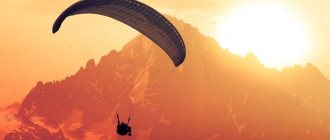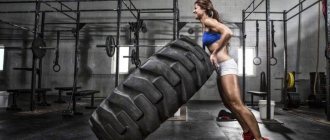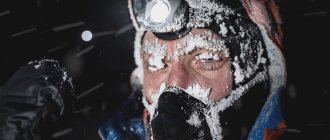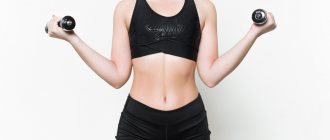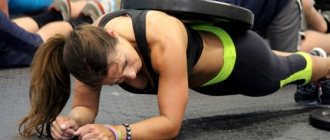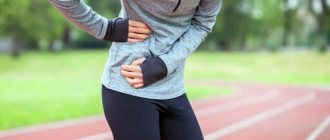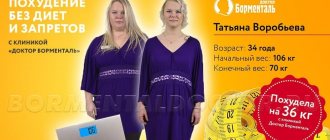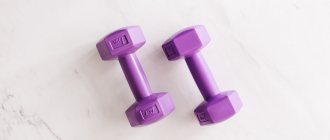Hello, friends. Those who care about their health will be interested to know that one of the best options for sports activity in winter is skiing. In order to go skiing, you don’t have to go to a ski resort. It is enough to get out to the nearest forest, planting or park. The benefit of skiing is not only the provision of necessary physical activity, but also the fact that during a walk you can enjoy the beauty of nature and breathe clean air. Skiing is an interesting and useful activity that is accessible to almost everyone.
Skis for weight loss
Since skiing is an excellent cardio exercise, it can help you lose extra pounds. To eliminate extra pounds, skating style running is suitable. The intense pace allows you to burn more calories than running cross-country. This happens because not only the legs, but also the arms are actively moving.
In just an hour of active training you can burn 600 calories. At the same time, fat will be burned and muscles will be strengthened, which will prevent the appearance of sagging skin and stretch marks.
To make fat burning as effective as possible, you should follow these recommendations:
— Work out about 3 times a week;
— The lesson should last at least an hour;
— You need to eat two hours before the start of training, and 60 minutes after it;
— The first training sessions should take place on level ground to thoroughly develop the sliding technique;
— The lesson should begin with warm-ups;
— You can’t suddenly give yourself heavy loads - not only will they not be useful, but they will also provoke malaise and poor health.
A number of mistakes can hinder weight loss:
- Fear of standing on one leg. A person will soon get tired and lose significantly fewer calories.
- Moving on straight legs. Almost all beginning skiers are afraid to bend their legs while skiing. It seems that level legs will provide some distance from the ground. But with straight legs, much fewer muscles are used, and in addition, such a movement will be more dangerous.
- Fear that my knees will cramp. It is also the fear of falling. The sliding time will be reduced and fat will be eliminated more slowly.
How to learn to ski: from theory to practice
In order for cross-country skiing to bring maximum benefits to the entire body, it is necessary to train using special techniques. It is important to know and apply the correct methods of braking, to be able to competently overcome climbs, make descents and turns. To develop the correct skiing technique, it is recommended to perform the first lessons in the company of a more experienced skier.
Braking methods
Braking is used during cross-country skiing in situations where it is necessary to slow down during a descent or stop quickly on a downhill or flat surface.
There are five main methods of braking:
- Half-plough. It is carried out by transferring the body weight to the front ski while simultaneously moving the rear ski towards the heel. The level of braking will depend on the angle of the braking ski to the side. It is advisable to use the method at low speed.
- Plow. It is performed by simultaneously smoothly spreading the heels of both legs to the sides and placing the skis on the inner ribs. Body weight should be distributed evenly on each leg. Braking efficiency is determined by the angle of the skis.
- By slipping. It is done by placing the skis across the slope, focusing on the surface with the upper edges. This type is effective for use on steep descents.
- With sticks. This is done by pressing sticks against the snow. The braking method has low efficiency and is used only in situations where there is no other way to reduce the speed.
- Controlled fall. It is advisable to use in extreme cases. This is done by squatting and falling to the side. The sticks at this moment should be turned with their pins backwards.
Overcoming climbs
Using proper technique on slopes can help you avoid injury and keep you strong enough to continue your workout.
Main types of lifts:
- Christmas tree. Effectively used when overcoming steep slopes. It is carried out by spreading the socks and placing the skis on the edge.
- Running step. It is advisable to carry out on moderately steep slopes. Lifting is performed by swinging alternating movements of the legs in a half-squat position. Hands move synchronously (right hand with left leg and vice versa).
- Climbing with a walking step. It is performed by alternating lunges of the right and left legs forward with energetic push-off with sticks. This method is effective during steep climbs with poor gliding.
- Half herringbone. Effectively used when moving obliquely along a slope. The essence of the technique is that the upper ski should slide straight in the direction of movement, and the lower one should turn its toe to the side and stand on the inner edge.
- Ladder. The ascent begins with turning the skis across the slope, placing them on the edge. Moving the legs is carried out with confident support on ski poles. The method is advisable to use during very steep climbs.
Descents
The technique of descent depends on the steepness of the slope and the level of sports and professional training of the skier. For beginners, it is recommended to use small slopes (no more than 30 degrees) to practice riding skills.
The most effective technique for descending on fairly steep slopes is side sliding. It makes it possible to control the speed of movement, prevent falls and injuries. The descent should begin by turning the skis across the slope and slowly edging them. When the skis begin to slide down, maintain the required speed by edging.
During a descent that does not require slowing down, it is important to maintain the correct position of the body - the legs are slightly bent at the knee joint, the torso is slightly tilted forward, the ski poles are pulled back parallel to the spinal column and pressed with the hands to the body.
Turns
The technique for changing the direction of movement while descending a slope is determined based on the tasks the skier faces, the speed of sliding, the quality of the snow and a large number of other factors.
There are two main turning techniques:
- By stepping over (from the inside ski). Allows you to change direction without losing speed. Widely used by both beginners and professional skiers during training and competitions. The technique looks like this: during the descent, a person transfers the weight of the body to the outer ski, and moves the inner ski with his toe to the side and, transferring his body weight to it, energetically pushes off with the outer ski, having previously edged it onto the inner edge. Next, the outer ski is quickly brought to the inner one. The angle of rotation is determined by the number of steps.
- Plow. Used during descents from small slopes in soft and shallow snow. The turning technique looks like this: placing the outer ski on the inner edge and moving it forward a little, you should transfer the weight of the body to it. The skier moves along an arc of turn while maintaining the accepted position. The turning radius is controlled by the amount of ski placement on the edge and the level of heel abduction.
There are also turns: from stop, on parallel skis, with scissors. However, these techniques are more suitable for people who already know how to ski well.
Skis for strengthening muscles
What muscles work when skiing? While skiing, almost all muscles are used: legs, thighs, arms, back and abdomen. If you ride regularly, they become elastic, resilient, and hardy.
It is important that muscles that are difficult to work out when going to the gym for fitness are actively involved. The lower abdominal and core muscles work actively. In addition, skiers have legs in perfect shape. When descending, the main loads fall on the legs and hips, the back and chest muscles act, which makes it possible to obtain good posture.
To maintain muscle tone between workouts, the load should be gradually increased over several weeks.
Skiing and health: everything you need to know
Greetings, dear friends! In the last publication in the “ Body in Action ” section, the topic “ Bicycle and health ” was discussed. Today's topic will be “Skiing and Health: Everything You Need to Know.” Have you decided to play sports in winter? Then it's time to learn about cross-country skiing - the safest winter sport - we'll tell you about the benefits, how many calories ski training burns, what weather it can be carried out in, and what precautions you need to take.
Winter sports are a great way to lose weight and strengthen your immune system. And every skiing activity is also beneficial for health because it has a positive effect on your psycho-emotional state. After all, while some types of physical activity can become stressful for the body, skiing brings pleasure.
Cross-country skiing is a popular sport
Cross-country skiing is a popular winter sport. Its most important advantage is accessibility. After all, unlike alpine skiing, you don’t need expensive equipment here. Of course, if you wish, you can purchase beautiful sportswear, glasses and various accessories. But in general, to play sports, it’s enough to just buy cross-country skis, and you can start even with the simplest models.
The main advantages of cross-country skiing are as follows:
- The ability to train in the fresh air, which is much more effective than working out in a gym, even if it has a good ventilation system.
- Opportunity to go skiing with the whole family. It’s not easy to bring a child to the gym, and there are age restrictions, but in skiing there are practically none.
- There are no special requirements for the training of an athlete. This type of physical activity is suitable even for those who have never tried anything like this before. It's not at all difficult to master.
- High level of safety – the risk of injury is minimized.
- No contraindications. Since there is no impact axial load on the spine, even people with osteochondrosis can choose cross-country skiing. Some experts say that you can ride even if you have a hernia, if it is small.
But this sport has only one drawback - it is seasonal.
A little history
Perhaps every fan of this sport needs to know a little history. Moreover, it itself is very interesting. Today, the concepts of skiing and health are something like a hobby or recreation. But the first skis, which appeared several thousand years ago, performed an exclusively practical function - they were used for hunting.
Rock paintings created 7 thousand years ago were found in Norwegian caves, which depict just such skis. And later these wooden planks were used in the armies of the northern countries.
The first competitions were held more than 250 years ago, but then they were forgotten for some time. And officially such competitions took place for the first time in 1863 in Finland.
Fridtjof Nansen, the famous Arctic explorer, contributed to the popularization of this sport, and soon skiing conquered the world. In Russia, official competitions have been held since 1894. Since then, skiing has been constantly developing, new records are being set.
Skiing and health for the whole family
Vacationing together strengthens relationships and helps relieve stress. The good thing about cross-country skiing is that the whole family can take part in such activities. This is an active holiday that helps control stress, it is the joy of communication when the family can forget about everyday worries for a while.
Finally, this is a sport that brings a good mood. This is also another reason to take a few photos for the family photo album.
Skis for sports from early childhood
One of the advantages of this sport is that it is suitable for all ages. In principle, you can start skiing from early childhood - some experts believe that from the moment the child turns one and a half years old. But in fact, everything depends on the individual pace of development, and it is better to wait until the baby is two years old, and his movements become more confident.
However, there are certain restrictions for children. It is better for preschoolers and children from 7 to 9 years old to ride at temperatures up to 13 degrees below zero. If there is high humidity and moderate wind outside, then even slight frost is perceived worse, so under such conditions the optimal temperature for children to ride is up to 5 degrees below zero.
For middle and high school age, the restrictions are not so strict: the recommended temperature is up to 18 degrees below zero, and with high humidity - up to 12 degrees below zero.
Skiing and health: what are the benefits?
For those who watch their figure, the benefits of skiing are obvious - in an hour of exercise you can lose 500-900 kcal. Although a lot, of course, depends on the skating style, on the speed, on how often the athlete takes breaks. During intense training, you can lose 1200 kcal per hour, especially if you move through difficult terrain, where there are uneven terrain and obstacles.
The benefits of skiing go beyond lost calories. This kind of sports:
- Improves coordination of movements, which is very useful at any age.
- Provides proper load on the heart. Due to smooth cyclic movements that are repeated in a certain order, the blood vessels gradually dilate, blood circulation improves and the heart rhythm returns to normal.
- Abdominal muscles are strengthened.
- The condition of the joints is normalized.
- The body is saturated with oxygen.
Thus, cross-country skiing is significantly more effective than not only running, but even swimming.
Precautions: how to ride without injury
Even though cross-country skiing is one of the safest sports, certain precautions should still be taken.
First, you need to choose quality equipment.
Secondly, before starting a lesson, you should definitely do a warm-up to warm up the muscles of your arms and legs. In this case, just a few squats and bends are enough to prepare well.
Thirdly, you need to learn how to control your skis correctly in order to get out of a potentially dangerous situation.
Beginners often experience injuries associated with sprained ankle or knee joints. Therefore, it is best for beginner skiers to learn to ski on absolutely flat terrain, where there will be no obstacles or hills.
But it also happens that ligaments and dislocations occur even in experienced athletes - for example, if a person has lost his balance or there is an uneven surface under his feet.
It also happens that the injury is due to the fact that the skis diverge widely, and the athlete is unable to bring his legs together - there is not enough strength. To avoid this situation, you need to train all year round. Of course, you won't be able to ski in the summer, but simple exercises like squats and walking up and down the stairs will help.
If a person does get injured - and this is indicated by pain, swelling, redness, and the inability to move the leg freely, then you need to fix the joint with an elastic bandage. Then seek medical help.
Skiing weather
Cross-country skiing does not require any special conditions. Suitable weather for skiing is the absence of strong wind and snowfall. In addition, it is not recommended to engage in active sports at temperatures below 20 degrees. Of course, if there is high humidity outside, then the frost will be felt more strongly, then the temperature limit will be 15 degrees below zero (for adults).
Ski tourism
Finding suitable cross-country skiing destinations is much easier than choosing a downhill ski resort. There are good trails in almost all major Russian cities. More and more tourists prefer active holidays. During the New Year holidays, families go to Krasnaya Polyana, Dombay, Arkhyz, Elbrus, Sheregesh, Abzakovo and other resorts.
There are both trails for beginner skiers and challenging roads for professionals. People praise cross-country ski trails at resorts such as Krasnaya Polyana (the total kilometer of trails there is about 25 km). Ski tourism is very well developed in Russia in the Caucasus, where mountain ranges stretch for 1100 km.
Cross-country skiing in other countries
Many people are interested in how this sport is developing in other countries. In fact, cross-country skiing is popular in both the United States and Canada. But the world's southernmost winter route is located in the United Arab Emirates. The indoor pavilion uses 6,000 tons of artificial snow on a 400-meter descent.
But, perhaps, only in Scandinavia did they become part of the national culture. They are especially popular in Norway. Norwegians Fridtjof Nansen and Roald Amundsen made a great contribution to the development of this sport.
And since cross-country skiing became an Olympic sport, Norwegian athletes have regularly ranked among the best at every Winter Olympics. However, for most people in Norway, skiing is most often just a form of social interaction.
Finally
There is no doubt that skiing and health are closely related. Cross-country skiing is a somewhat unique sport, a rare combination of health benefits and simple pleasure that is difficult to find anywhere else. As a result, a charge of vivacity and a surge of strength arises, fatigue disappears, and vitality returns to normal.
In conclusion, I invite you to watch the video “On the Benefits of Skiing” by the OTS TV channel.
Thank you for your attention, dear readers! If you want to learn even more about how to lead a healthy lifestyle, subscribe to updated articles in the “ Body to Action ” section. Also, don’t forget to recommend the article to your friends on social networks! I invite you to watch videos on my You Tube channel.
May everything be fine with you, Vera.
Cardiovascular and respiratory system training
What are the health benefits of skiing? They help to harden the body and teach it to react normally to fluctuations in weather conditions. Blood flow and respiration are activated. When a person moves on skis, as with other body movements, the heart often contracts, the vessels become wider and blood can circulate through them faster. Breathing becomes frequent and deep, the blood receives more oxygen, moving it throughout the body. Signs of oxygen deficiency are eliminated, metabolism is enhanced with further removal of metabolic products (also called waste).
All these processes have a beneficial effect on the immune system, significantly strengthening it. People who ski rarely get infections, and if they do, the illness goes away without serious complications.
Everything is useful in moderation!
If you're hooked on cross-country skiing after your first trial lesson, there are only two things you need to learn: first, be patient, don't overdo it, no matter how rewarding the sport is. For cross-country skiing, it is also important that you don't tire yourself out every day, but schedule rest days. The older a person is, the longer it takes him to recover.
To continue training in the warm season, when the snow melts, running sports are suitable. An excellent choice is Nordic walking. Another good addition is cycling.
Share this article
Prevention of scoliosis
Of course, when scoliosis appears, the doctor will first prescribe physical therapy, determining the level of stress and type of sports activities. In many cases, swimming is prescribed; its effect cannot be challenged.
Avoid exercises that involve twisting or that increase the mobility of the vertebrae. Skiing also helps protect against scoliosis. Skiing on flat terrain can not only prevent scoliosis, but also complement therapeutic exercises after the disease manifests itself.
Before starting classes, consultation with a doctor is required - in certain stages of scoliosis, playing sports is contraindicated.
Strengthening joints
At first glance, it looks incomprehensible, but the load on the knee and hip joints during skiing is not as strong as when walking. It's all about sliding and additional supports in the form of clubs: the pressure on the spine area and on all groups of joints will be insignificant, the person will take a small number of steps, and the effect of the mass on the leg area is reduced.
That’s why experts advise patients with arthrosis to ski. Overweight people will also be able to engage in this sport without fear.
Ski walking is allowed for patients with arthrosis of the hip joints of 1st and 2nd degree.
If you have problems with your knee joints, orthopedists do not recommend giving up movement. In this way, the condition of the joints can be improved by receiving nutrition from the bloodstream of nearby muscles.
Experts have long noted that practicing this sport stimulates the muscle framework, accelerates metabolism in the joints, preventing their aging.
Safety precautions
The type of skiing is chosen depending on physical fitness and existing skiing skills. This could be walking or running. It will be difficult for beginners to immediately start moving at a fast pace. It's best to start by walking on flat terrain. First, you should rehearse the basic movement without skis and only then start training with the apparatus.
In order for skiing to bring only health benefits , it is necessary to increase the load after 2-3 weeks of regular training. But you should definitely monitor your heartbeat and pulse, which should not exceed 120-140 beats per minute.
When learning skiing techniques, you need to avoid the following mistakes that most beginners make:
- stiffness and excessive tension in the lower extremities;
- a very straight back, and as a result, too narrow steps;
- poor use of poles, which makes it impossible to push off from the surface normally.
But the most important danger facing novice skiers is the increased risk of injury. To prevent falling, you should slow down your pace of movement and carefully select the terrain for your activities, avoiding holes and ravines.
Another unexpected problem that can happen to an inexperienced skier is dehydration. During the cold season, a person is rarely thirsty, but this does not mean that he does not need water. And with physical activity, its rate increases significantly. Therefore, when skiing, you must take a thermos with a warm drink.
How can skiing harm the body?
Skiing can not only be beneficial, but also harm the body. This can happen if a completely unprepared or sick person rides.
In particular, you should pay attention to the condition of the blood vessels. If you are diagnosed with varicose veins - unhealthy stretching of blood vessels, then you will no longer be able to ride. Even those who attended training in unsuitable equipment suffer from it (we are talking about buying high-quality compression underwear that prevents pathological stretching of blood vessels).
It is important to know that even after a common cold, at least 10 days must pass.
Beginners should start training with simple sections of terrain, otherwise there will be a high risk of injury. It’s good if everything ends with a few bruises and abrasions. But by neglecting your own safety, you can get sprains, dislocations or fractures of the limbs; the spine and neck area also remains at risk.
Cross-country skiing in Moscow: where to go
- Meshchersky Park. There are well-prepared trails, flat terrain and wide paths. Many skiers train here: you can study skiing techniques and try to repeat something.
- Alfa-Bitsa route. A popular place among skiers, although the terrain is a little more difficult, there is good infrastructure.
- Gabovskaya ski track. A well-prepared route, a beautiful forest and a good length - the circle diameter is about 30 kilometers. There are places with and without relief - for beginners.
- Odintsovo Park, Izmailovsky Park and Malevich Park - if you don’t want to travel far, but want to ski within the city on good ski tracks.
- Rybinsk (350 km from Moscow). The Rybinsk Ski Marathon traditionally takes place here, and there is also a good ski center, high-quality trails and interesting terrain.
